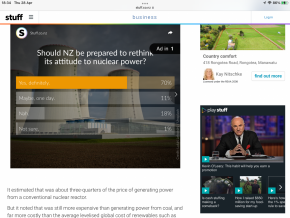Just briefly on the 757 replacements, from the
DCP19 (as it appears to be the last publicly available published information):
Investment decisions planned for 2026
Future Strategic air Mobility
179. Operations in the Pacific and globally will require an air transport option for the movement of personnel, equipment and stores over long ranges. The eventual withdrawal from service of the current Boeing 757 fleet will allow for the procurement of a strategic airlift capability that meets capability requirements across a range of tasks.
Indicative dates:
Industry engagement commences – 2021
Request for tender – 2024
Introduction into Service – 2028
Indicative capital cost:
From $300m–$600m
IMO the project scope and costs should be reviewed (post 2023 election) if anything substantial and sustainable is to be acquired and operated.
Because with indicative capital costs of $300-$600m back in 2019 (mind you before the project has been scoped), at the lower end (and if we have a ambivalent government during the project definition stage etc) then "worse case" this funding could potentially provide something along the line of two A321neo's (as per this early 2019
op-ed).
Although perhaps at the higher end of the funding range Defence could have been looking at the likes of (eg) two A-400M, or two C-2, or possibly two KC-30A should AAR become a requirement (google searches suggest these aircraft of these types, although no doubt others too, could be bought for up to NZ$600m).
The reason for suggesting the project scope and costs should be reviewed (post the 2023 election) is DCP19 appears to be following at the time "current/peacetime" like-for-like replacement and benign environment thought process.
The world situation has now changed (which has been stated by our own defence and foreign affairs analysts, even the Opposition in some respects i.e. it's just not me or us here saying that).
And without getting into future "fantasy fleets" all I would like to say next in relation to the project is .... "we" need to change the mindset whereby "2" has become the new "3" (in which governments of all hues have funded eg 2 Frigates or OPV's instead of 3 or 2 757's (and their replacements) instead of 3 etc). So for the project a minimum of 3 has to be the new normal, although even that may not be good enough (for this changing world) so I agree with Stuart that 4 would be a better new normal as it allows for better sustainment.
If we look at the RAAF C-17 example, their initial buy was for 4 aircraft (although further aircraft were bought later on to better sustain operations due to "deeper" maintenance unavailability periods).
The other thing I would like to say in relation to the project is that one aircraft type will not in any way adequately support the range of tasks our (small) NZDF will need to fulfill in a (larger) world. The NZDF (like the ADF) can operate anywhere from Europe (as they did in two world wars, more recently in Bosnia and today supporting NATO with the Ukraine war), in-between (the Middle East to Asia to South East Asia) to our wider backyard region (the wider Pacific and towards South America) and south into the deep Southern Oceans and the Antarctic).
So we need two aircraft types, one being with the rear ramp to allow the carrying of assets such as vehicles, heavy armored vehicles, artillery, helicopters and munitions etc. And we need the "airliner" fuselage type for troop transport, medivac, VIP, civilian transport eg Antarctica and ideally air-to-air refueling to extend our reach.
The Opposition encountered these exact issues several years ago when former DefMin Gerry Brownlee advocated and proposed the acquisition of C-17 aircraft. The delays (which saw us lose out on the Whitetails) were, from my reading of the released Ministerial briefings at the time, largely caused by Treasury and Cabinet dithering and re-reviewing "how to make square pegs fit into round holes" as Defence were required to perform the utterly impossible task of devolving 757 operations to allow for incoming C-17's.
Clearly the two aircraft type were (are) needed, but Defence were not permitted to do so, as they had to operate within their existing budgets and outputs. A clear anfd tragic case of bureaucracy knowing "what's best", than the experts (Defence).
(I would like to see "Big Jerry" remain an MP post 2023/2026, as his insights into the early C-17 debacle may be invaluable to get these sorts of issues resolved)!

